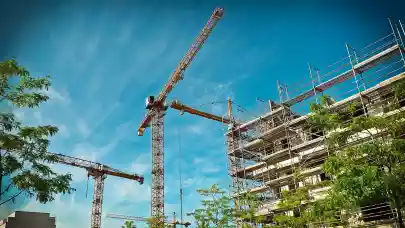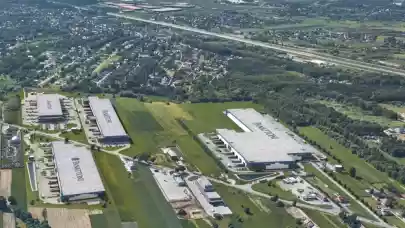
Residential developers operating in Poland's largest markets broke the quarterly sales record set in 2017. Sales of new apartments reached 19,500 and were up 40% q-o-q. Continued demand oversupply is pushing prices up further.
The beginning of 2021 brought a new quarterly sales record on the primary residential market in Poland. Developers operating in Warsaw, Kraków, Wrocław, the Tri-City, Poznań and Łódź sold a total of 19,500 apartments in Q1 2021, a 40% increase on the previous quarter and beating Q4 2017’s record by 3%. However, the situation on the supply side looks decidedly worse. Although there were 13,900 new launches in the first quarter of 2020, an increase of 14% q-o-q and 7% y-o-y, demand has been outstripping supply for several quarters, further fueling price increases, according to the latest JLL report "Residential Market in Poland - Q1 2021".
After a temporary lull, resulting from movement restrictions in Q2 and cautious bank policies in Q3 2020, interest in residential purchases has recovered surprisingly quickly. However, the developer offer in major cities fell to 42,100 - the lowest level since 2014.
"Data provided by Statistics Poland (GUS) on the number of construction permits issued from January to March this year, as well as in previous months, may indeed inspire optimism and hope for a return to a more balanced supply and demand situation. But it should be remembered that conditions differ significantly from market to market. The biggest challenge for companies today is in Warsaw, where the offer level has dropped to its lowest level in 14 years", comments Aleksandra Gawrońska, Senior Consultant in the Residential Market Research Team at JLL.
The theoretical sell-out rate calculated by JLL experts is the time needed to completely sell out of an offer on the primary market, assuming that no new investments will be launched and that demand will remain on a par with the previous12 months. Wrocław was the only city that exceeded four quarters, indicating fairly balanced demand and supply conditions. However, in the remaining major Polish markets, demand shortened the sell-out rate to around three quarters. In Warsaw, the sell-out rate was even shorter, meaning there could be a shortage of apartments on the market in only six months.
Worth their weight in gold?
So, it is hardly surprising that prices have risen again. The most stable indicator - the average prices of apartments available for sale - increased q-o-q by 2% in Poznań, 3% in Kraków and the Tri-City and 5% in Łodź, Wrocław and Warsaw. An even bigger increase in prices was seen in apartments coming onto the market in Q1. For example, in Warsaw and Wrocław, prices were on average 9% higher. It was a different story in Kraków, which was the only city of the six analyzed by JLL, where apartments coming on to the market in Q1 2021, had lower offer prices than those of the previous quarter. This drop, however, is mainly due to the number of very expensive apartments introduced in Q4 2020, making Kraków the leading city for price increases in 2020.
"There has been a range of factors that are reflected in the pricing policy of developers. Many companies have had difficulties in launching new investments due to protracted administrative procedures or the availability of investment land. Consequently, developers are trying to stabilize the pace of selling out their existing offer while regulating the flow of prospective clients with appropriate price controls. On the other hand, wealthy clients motivated by inflationary pressure do not seem to be deterred by price increases. On the contrary, it proves that it is possible to protect the value of capital in the housing market. Less affluent clients, fearing further price increases, accelerate their purchases by seeking low-interest mortgage loans", says Kazimierz Kirejczyk, Vice President of the Management Board at JLL.
Next quarter's results will show how much of the excellent first-quarter sales were mainly due to meeting the pent-up demand in 2020, and how much this sets the scene for the second half of 2021. Of key importance for future developments will be the ability of developers to replenish their offers and to look for ways at a legislative level to cool down speculative demand.



